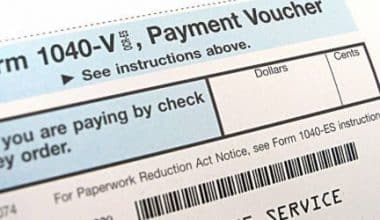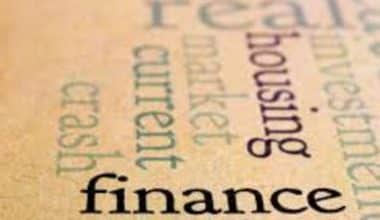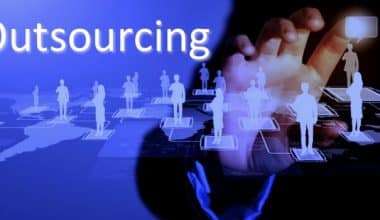Many businesses employ cost-cutting techniques in an effort to increase their business operations. But nevertheless, when trying to save money, you could have to sacrifice quality, which might hurt your business. Instead of trying to maximize profits by cutting costs, a better alternative is to focus on maximizing efficiency. In other words, project businesses must prioritize cost-effectiveness above all else. You must keep project expenses under control, spend less money than you earn, and still satisfy customers. It can refer to a variety of things depending on the situation, but it always refers to a company’s capacity to spend less money, work more efficiently, and make more money than it would otherwise. In this guide, we’ll explain what cost efficiency entails, the products, the differences (cost-efficient vs cost-effective), and examples.
What is Cost-Efficiency Mean?
Cost efficiency refers to the capacity to provide goods and services at the most affordable cost without sacrificing quality. It involves reducing expenses while preserving a high standard of service, quality, and innovation.
Businesses can save money by implementing cost-efficiency measures that aim to improve productivity without sacrificing quality. Efficiency savings can be calculated by contrasting the value of the product with the input costs. This analysis of revenue vs expenditures might help your company find places where it can cut costs while also boosting productivity. However, cost-cutting and cost-efficiency are not the same thing. It prioritizes short-term cost savings at the expense of analyzing the effects on the company as a whole. Cost-effectiveness can aid in cost savings, but only if you spend less time and money to get the same benefits. Never in a way that jeopardizes your customers, reputation, or the long-term viability of your company.
It’s basically a strategy that puts careful spending and investment first to accomplish a goal in the most intelligent way possible, whether that’s meeting specific project goals for a customer or your company’s overall sales targets.
Understanding Cost Efficiency
Cost efficiency is a technique used in business to improve a process or product while saving the organization money. Due to the fact that this cost-saving method lowers procurement prices and boosts manufacturing efficiency, organizations must pay close attention to specifics in this area.
Cost-effectiveness is a key component of any business’s strategy, even though it does not solve all of the company’s problems. It saves time and effort while lowering costs and ensuring the effectiveness of procedures.
Since every firm has different needs and a different operating model, it is essential to perform a cost-benefit analysis to maximize cost-effectiveness. The study assists them in identifying chances for growth and problem areas, which, over time, enable them to cut expenses and boost productivity effectively.
To do a cost-benefit analysis, the organization must first compile a list of all probable costs. The following expenses might be incurred:
- Intangible Cost: Examples involve goodwill, safety and security, and worker wellness.
- Direct Cost: This may include, manpower, inventories, and raw materials
- Indirect Cost: Overhead, rent, and utility costs all fall under indirect costs.
- Opportunity cost: here we have time constraints and outsourcing instead of in-house production.
- Risk cost: this has to do with regulations, the environment, and competition
The business will have a deeper understanding of the possible benefits by increasing the effectiveness of handling these costs once they have been estimated and taken into account. The advantages comprise:
- Tangible Advantages: growth in customer base, sales, and revenue.
- Intangible Advantages: Customer satisfaction has increased, staff morale is high, and processes are more effective.
- Competitive Benefit: Any business can gain a competitive advantage over rivals by comprehending the nuances of the process, which results in a larger market share.
Why Is Cost Efficiency Important?
Cost efficiency is crucial since it makes it possible for businesses to increase their profits. It makes sure your company is successful, profitable, and long-lasting. If you’re not cost-effective, your business will fail quickly since you’ll wind up spending more money than it makes. They make the most of a business’s potential, allowing it to increase income while also enhancing the value it offers clients. This is basically crucial as it ensures businesses develop and flourish.
Operating a cost-efficient firm decreases expenses, boosts profit margins, and releases revenue for expansion. Businesses can also make smarter selections thanks to cost efficiencies. They enable experts to evaluate the advantages, disadvantages, and value of investments, programs, as well as projects to establish their profitability. They might also find advantages or chances that weren’t previously thought of.
Cost efficiency, however, is more than just a financial indicator. It exists where quality and price converge. Hence, it is crucial since it guarantees that your company will continue to fulfill and satisfy customer expectations. Without the quality component, your company will quickly experience a decline in sales.
How Can You Achieve Cost Efficiency?
These are some ways to increase cost efficiency:
- Create a balance between contract and hired work
- Invest in increasing output.
- Encourage competition among suppliers
- Simplify and improve processes
- Increase transparency at work
- Change to a remote system
- Create effective inventory management techniques
- Streamline administrative tasks
- Maintain positive interactions with suppliers
- Analyze your business’s expenses
- Use cloud-based alternatives instead
- Investigate possible greener options.
- Alternate suppliers
What Are the Two Components of Cost Efficiency?
Cost-benefit analysis and cost-effectiveness analysis are the two main components of cost efficiency. In contrast to cost-effectiveness analysis, which analyzes benefits in terms of some other unit, cost-benefit analysis assigns a monetary value to those advantages.
Cost-Efficient vs Cost Effective
The terms cost efficiency vs cost-effectiveness are generally used interchangeably. The two metrics are comparable but provide different ways to evaluate a company’s success.
Cost efficiency is the practice of completing a job with the fewest resources or expenses possible. One of the most important goals of any company is to reduce its operating costs as much as possible.
On the other hand, cost-effectiveness gauges how successfully you are accomplishing your objectives. It refers to the connection between the number of resources used and the outcomes that are produced.
This indicates that a company can be successful (effective) without being efficient, but it is impossible for a company to be efficient without also being successful.
Read Also: INDIRECT COST: Meaning, Rate, Grant & Difference
What Is an Example of Cost-Effective vs Cost-Efficient?
Your marketing cost per sale, for instance, would be $40 if you spent $10,000 on a marketing campaign and made $250,000 worth of sales. On the other hand, you might not have been very cost-efficient overall if your profit margin on each transaction is only £2 and it takes two months to make a sale (on average).
Hence, while considering the expenditures of your business, don’t simply concentrate on how much items cost; also consider whether there are any less expensive ways to accomplish the same goal without compromising quality.
Cost-Efficiency Examples
Cost efficiency is a business strategy that aims to lower production costs without lowering the quality of the final products or services. It is a key part of making a business more profitable because it helps the business get better results with less money and gives customers something of value.
Cost efficiency generally deals with reducing costs by improving products or services. While it serves many purposes, the goal is to increase the bottom line of the company by lowering procurement costs and increasing overall efficiency.
Let’s get a better understanding of how cost efficiency works by looking at the examples below:
#1. Chasers- Sneaker Manufacturing Firm
Kings Legs manufactures unique footwear for athletes and celebrities alike. For the past five years, they have been serving the market. They have gradually extended their market presence over the past few years. Yet, they discovered after performing a cost-benefit analysis that they spend about 10% of their budget on the packaging.
Hence, they made the decision to outsource this portion of the process to a reputable packaging company in order to reduce the prices of packaging, which was still one of the most crucial criteria to draw clients.
The Chasers were able to save $30,000 annually because of this collaboration, freeing up time and resources for the company’s managers to focus on other aspects of the process.
#2. Nikola Corporation
Nikola Corporation is basically one of the market leaders in energy solutions and heavy-duty commercial battery electric vehicles. It announced its collaboration with E.ON Hydrogen in December 2022 in order to develop affordable solutions for its clients throughout Europe.
Their collaboration was born out of the necessity for some business owners to cut the expenses of such trucks.
Advantages of Cost-Efficiency
While there are numerous advantages to employing a cost-efficient analysis, here are a few;
#1. Profitability
Cost-cutting is one of the many advantages that helps the business become more profitable. Additionally, because of the lower production costs, they have a greater opportunity to use the money at their disposal to provide their clients with better value.
#2. Making Decisions
Management can make more informed judgments about how to maximize the efficiency of a process or the entire production cycle by calculating the associated costs and benefits. The results of the analysis will have an impact on the company’s production, as well as its sales, marketing, and logistics operations. If, for instance, the company can save money by outsourcing logistics instead of handling it in-house, it makes sense to do so.
#3. Increased Revenue
When manufacturing or service costs are dramatically reduced without sacrificing quality, a corporation may manufacture more, reach a wider audience, and ultimately increase revenue.
#4. Increased Customers Value
A better customer experience can be achieved by investing the money generated through process optimization and improvement in better marketing, packaging, customer reward programs, etc. This might eventually help to increase customer loyalty and retention rates.
#5. New Possibilities
When the details of the process are considered, it offers the management new viewpoints and enables them to experiment with various methods for conducting business as usual within the company. Without comparing the returns on the outputs to the costs of the inputs, these findings might never have been made.
How to Measure Cost Efficiency?
Cost efficiency is the net difference between input costs and output returns. It indicates that in order to increase efficiency and manage resources effectively, the expenses associated with creating a good or service must be decreased without reducing the quality.
Why Do Advertisers Want to Maximize Cost Efficiency?
Making sure marketing expenses don’t exceed profits per unit sold is one of the main justifications for advertisers and marketers to be strict with cost efficiency. Besides, this tends to be the case most of the time big marketing expenses do not result in the required amount of sales, thereby burning a hole in the company’s finances.
Conclusion
Pursuing cost efficiency is for you if you want to boost profits while also eliminating wasteful time and optimizing workflows. Having access to your cost and spend data makes it simpler to monitor compliance, make better decisions, and identify areas of your business that require improvement.
Being cost-efficient not only helps a firm generate more revenue and profits but also enables it to make better process decisions.
By deploying cloud-based or AI-enabled tools that assist them in identifying problem areas, businesses can attain cost efficiency. And as opposed to manually keeping such information, this procedure is more time and money efficient.
Related Articles
- LOW-COST ADVERT STRATEGIES(Opens in a new browser tab)
- MANAGEMENT ACCOUNTING: A Comprehensive 2023 guide (updated)
- COST ACCOUNTING: Meaning, Importance, Types, and Guide
- OPERATIONS MANAGEMENT: Definition, Types, and Best Practices






